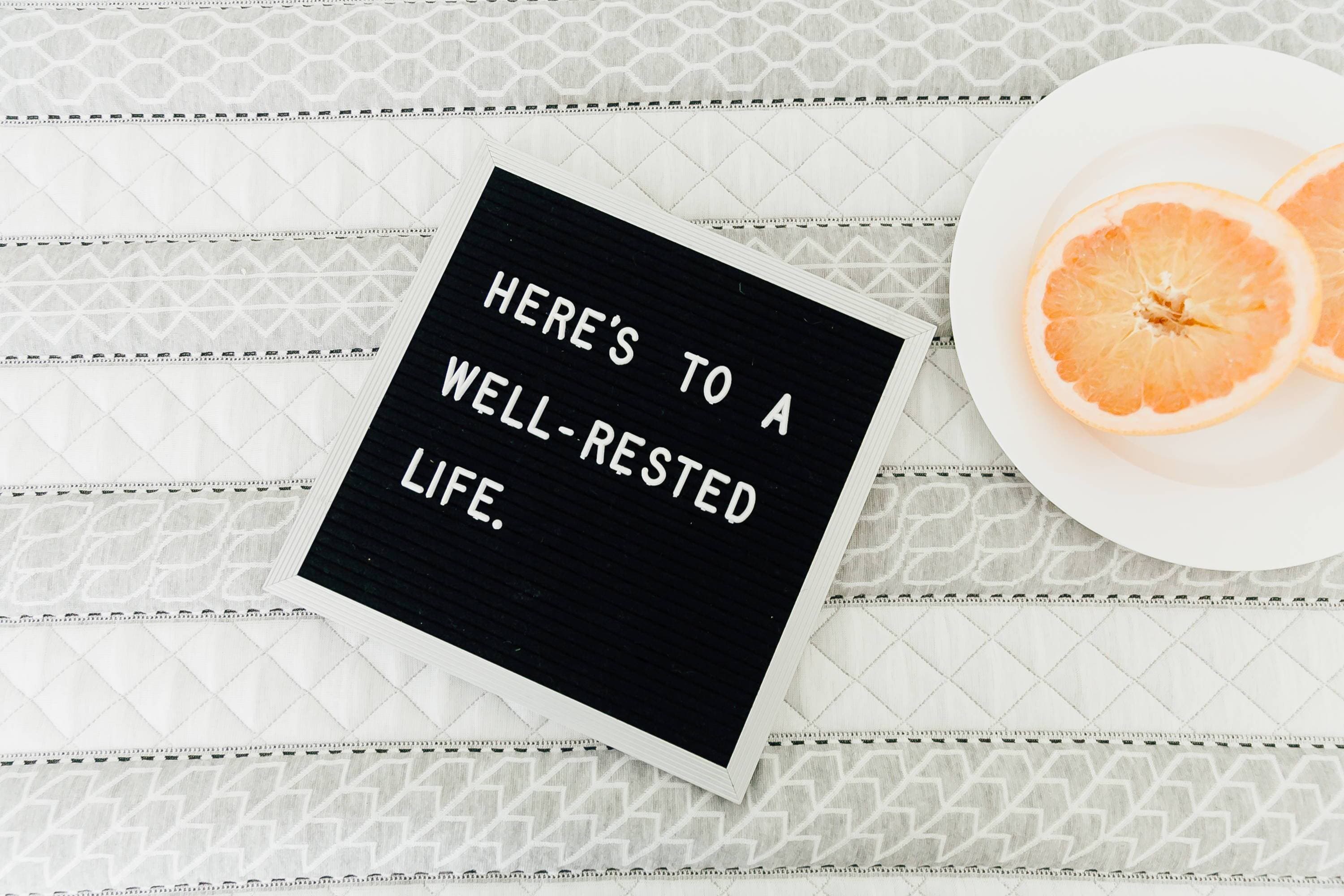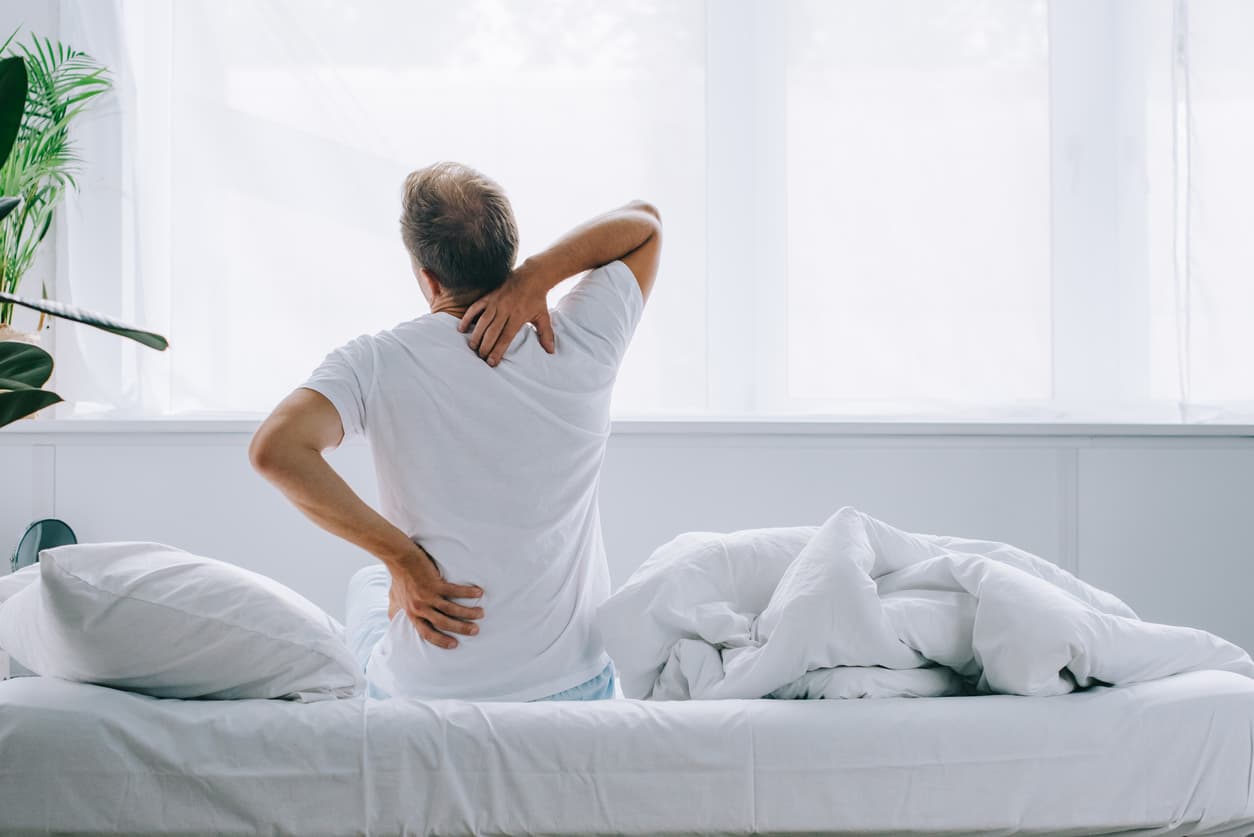Have you ever gone to bed totally fine and woken up with an achy, tense back? Your mattress may be the culprit. Your sleep position and what you sleep on have a significant impact on spine health. The wrong mattress can lead to poor posture and even worse spinal recovery.
The good news is that the right spine alignment mattress gives you the restful sleep you need. Use this article to find the ideal mattress that gets your body back in alignment.
Key Takeaways
Proper spine alignment during sleep is crucial for preventing back pain and supporting muscle recovery.
The right firmness and support system varies based on body type, sleeping positions, and personal preferences.
Advanced features like cooling layers, pressure relief, and zoned coils can significantly improve sleep quality and spinal health.
Hot sleepers benefit from cooling technologies and breathable materials for better sleep.
Investing in a quality mattress with risk-free trial options ensures you find the perfect match for your alignment and comfort needs.
The Science Behind Sleep Surface and Spinal Alignment
Proper spinal alignment isn’t magic. It’s the way the head, shoulders, spine, hips, knees, and ankles are positioned and aligned in relation to one another. When in perfect alignment, there should be a relatively straight line from your head to your ankles. It’s relatively simple, but when you add sleep into the picture, maintaining alignment gets a little tricky.
Understanding Proper Spine Alignment During Sleep
Obviously, your spine is slightly curved. You must support this natural curve during sleep. Sleeping like a puppy—curled up, splayed out at awkward angles, or twisted in your sleep—will eventually result in back pain. Stomach sleeping also twists your neck and allows your spine to sag out of its normal position, making spinal injury more likely.
Back sleepers and side sleepers have the right idea. These sleeping positions help maintain alignment and comfortable sleep. Side sleepers can benefit from a pillow between their legs to create a straight line from head to toe. Meanwhile, back sleepers can benefit from a pillow under their knees.
Regardless of sleeping position, you need a supportive pillow and a mattress designed for pressure point relief and support. Without this mattress support, even the most optimal sleep position won't save you.
The best sleep positions for spinal alignment remain the same regardless of body weight and type. While there is a connection between sleep and obesity, heavier folks should aim to sleep on their back or side, just like everyone else. However, if you are a larger person, you may need a mattress like the Plus Hybrid, which we engineered to support people weighing up to 500 pounds with luxuriously plush foams.
The Recovery Connection
Achieving spinal alignment is about more than just avoiding injury. The quality of your sleep, including position and time slept, determines how you recover from exercise. Restful sleep promotes muscle recovery for those with an active lifestyle, but an active lifestyle doesn’t just refer to runners and CrossFit-ers.
Whether you’re chasing a toddler around all day or bustling from meeting to meeting, you need at least 7 hours of good, aligned sleep for cell regeneration and tissue repair. Proper spinal position also allows for blood flow optimization, which improves your sleep recovery.
Mattress Construction and Its Impact on Posture
Good posture starts in your dreams. Okay, not really, but good mattress construction paves the way to better posture.
Support Systems That Matter
There are a few different types of mattress support systems that lead to proper back alignment, but the most important for good posture are zoned support and high-density foam.
Think of zoned support like special support systems in strategic places on the bed. The ‘zones’ are made of individually wrapped springs that provide responsive support and motion isolation. Strategic zoning delivers targeted reinforcement, particularly in the lumbar area and around the edge of the mattress, where support is crucial.
Meanwhile, high-density foam has a high weight per cubic foot, meaning it’s tightly packed for a firm, supportive feel. When premium, high-density foam varieties are strategically layered, they offer superior contouring and motion isolation, ensuring a more restful, uninterrupted, and restorative night’s sleep.
Sometimes, these two support systems are separate, but clearly, the most supportive mattress would combine the two. That’s where hybrid mattresses come in. They combine premium foams with supportive springs for the best of both worlds. You’ll wake up with a healthy spine, prepared to have good posture all day.
Pressure Relief
Pressure relief happens when your mattress contours to your body, keeping you in alignment. The right support system will relieve pressure and keep your body in a neutral position. However, there’s a little bit more to relieve pressure than just support. You also need a mattress with the right level of firmness.
Mattress firmness ranges from soft to medium to firm. The best option for most sleepers is a medium-firm mattress. Now, this isn’t to say that a medium firm is perfect for everyone. Your weight also has a lot to do with how much pressure you need. A lighter person sleeping alone may need a mattress that leans more toward medium. A heavier person may need a mattress that leans more toward firm.
With the right pressure relief and firmness, your back will remain in good posture while you sleep, making it so much easier to maintain good posture throughout the day.
Choosing the Right Mattress for Your Sleep Style
You’re a special sleeper. You have unique sleeping staples, body temperature, allergies, and more. Use these tips to help you choose the right mattress for your specific needs.
Sleep Position Considerations
Sleeping on your back can put up to 50 pounds of pressure on your spine. This pressure makes it extra important to get a medium-firm (leaning a little more to firm) mattress that will combat this pressure with the proper support.
Side sleepers need a mattress with support but also contouring to keep their hips, midsection, and shoulders aligned. Look for mattresses with memory foam layers.
Don’t forget about the pillow, either. It’s hard to count sheep in your dreams while resting on a hard, pokey pillow. Look for pillows made of supportive latex, cooling gel, or bouncy foam.
Personal Factors in Mattress Selection
We have to pick your mattress size, and this means considering your height and any sleep partners. If you or your sleep partner is over 6'2", then you may need a California King. At or under 6'2" will suit a King or a Queen. Of course, restless sleepers may prefer a larger bed to accommodate their sleep patterns, regardless of height.
Now, a sleep partner can refer to a dog, cat, partner, child, collection of stuffies, or all of the above. The more bodies in the bed, the bigger the bed should be. It will be challenging for two adults to achieve correct spinal alignment on a Twin. You also have to consider your available space. It will be challenging to fit even a King in a cramped apartment, while a Cali King would be well-suited to a primary bedroom.
Temperature Regulation Features
On the wrong mattress, your body heat turns your bed into a furnace. Poor quality materials will have you sweating through the night instead of sleeping. You’ll have no shot at proper rest and recovery.
Look for a cooling mattress with phase change material technology, like cotton and Merino wool, that creates a cooling effect without harmful chemicals. A breathable cover made of plush materials and an airflow design keeps your body at the ideal sleeping temperature of 88 degrees all night long.
A cooling mattress like the Legend Chill Hybrid may be just the thing. This mattress pulls heat away from your body and is an ultra-chill solution for hot sleepers.
Signs Your Current Mattress Is Affecting Your Health
These are some of the signs that your current mattress is seriously affecting your spinal and overall health:
Morning back pain and stiffness
Pressure points causing discomfort during sleep
Poor sleep quality and frequent waking
Impact on daily comfort and support needs
Motion transfer disrupting partner sleep
Difficulty finding a comfortable sleep position
Temperature regulation issues affecting restful sleep
Overall poor satisfaction with current sleep surface
Get Restful Sleep on a Mattress that Supports Your Health from Leesa
Mattress choice directly impacts spinal alignment, posture, and recovery. You deserve to sleep easily and safely on a mattress attuned to your unique bedtime needs. At Leesa, our mattress solutions are designed with the best materials to encourage general health.
Look toward supportive (and cozy) mattresses like Sapira Hybrid, whose 1,000+ individually wrapped springs and premium foam keep you supported all night long. If you and your partner can’t agree on a mattress, we have a solution for you. The Adjustable Base Pro allows you to choose a Split King setup; you’ll need to opt for two Twin XL mattresses—perfectly attuned to each partner’s needs—to allow each side of the base to be adjusted independently.
Get the sleep you deserve at Leesa.
FAQs
How do I know if my mattress is causing back pain?
If you’re constantly waking up in pain and struggling to fall asleep, you may have the wrong mattress. Mattresses with poor support can and will cause back pain.
What's the difference between foam and hybrid mattresses for spinal alignment?
All foam mattresses are made with layers of durable, supportive memory foam, while hybrid mattresses have this same memory foam and intersprings. Both options can be great mattresses, though a hybrid may be a better choice for excellent alignment.
How often should I replace my mattress for optimal posture support?
Ideally, every 7 to 10 years, when the decreased support starts to affect spinal health. It’s kind of one of those ‘when you know, you know’ things, but for more guidance, review the Signs Your Current Mattress Is Affecting Your Health section.
Can a mattress topper improve spinal alignment?
The best mattress topper in the world won’t make up for an unsupportive mattress. However, this soft, padded cover sits on top of your mattress and does help you sleep more comfortably. A mattress topper gives you an extra layer of warmth in the winter and extra pressure relief.
.png&w=3840&q=75)


